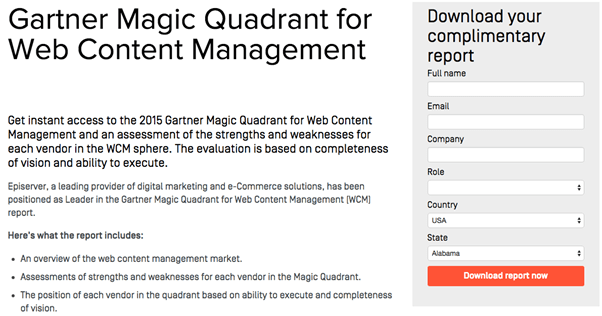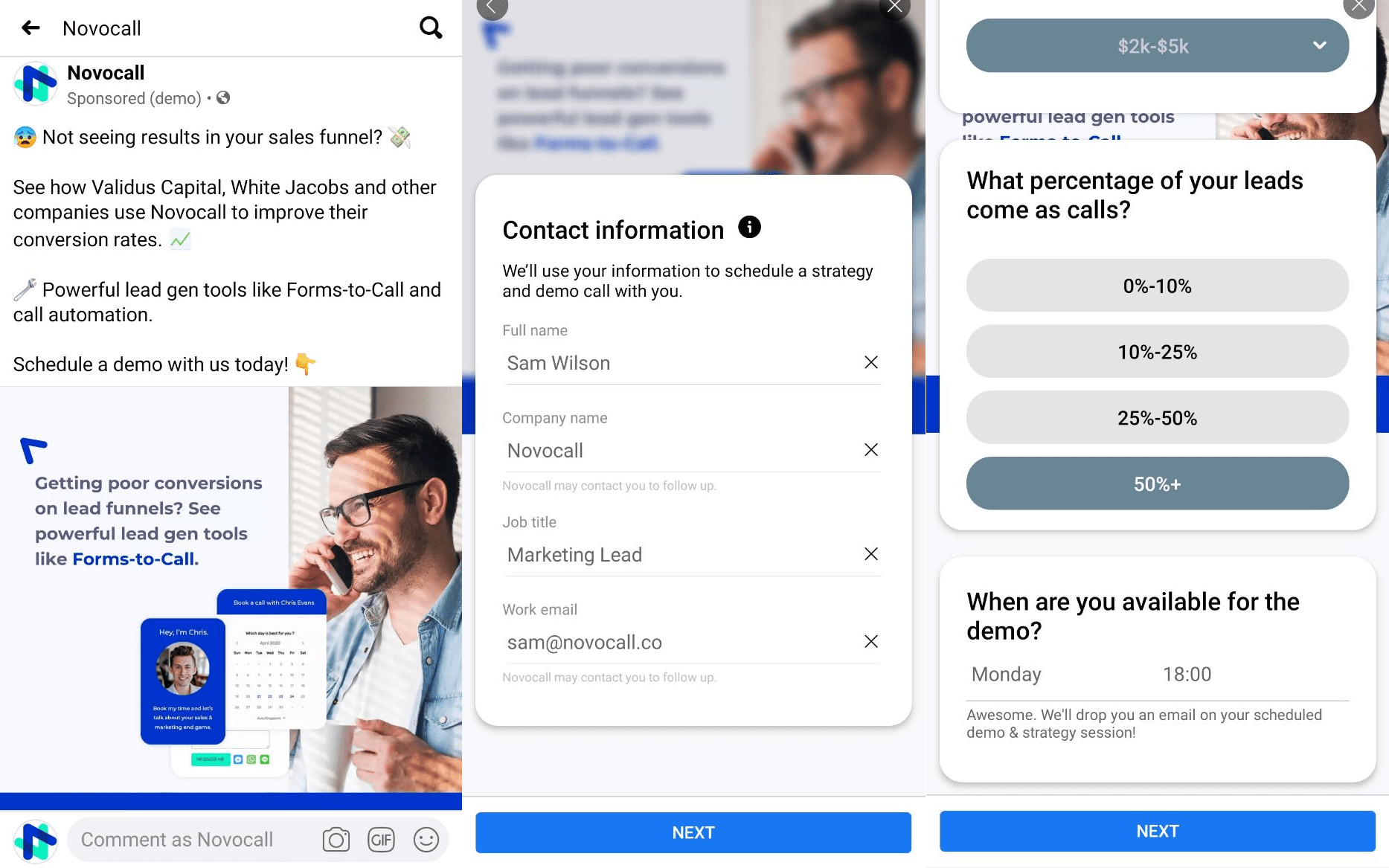

Start driving better conversations.
Novocall will be your new favorite business phone system.

You know something’s off when only between 5% and 10% of qualified leads convert.
Why though? 🤷

Having a good lead generation process in place should form the foundation of every business. Yet, marketers and salespeople struggle to get this right.
Let us run you through the entire process step-by-step!
Leads are people who express interest in your product, service, or business. They can do so by providing their contact information to the company.
And they do this for several reasons. Perhaps they wish to download a piece of awesome content. Or maybe they want to schedule a call with your company. Regardless of the objective, businesses generally consider a prospect to have converted into a lead once they’ve provided you with their contact details.
So simply put, lead generation is the process of capturing the interest of your prospects, warming them up, and pushing them down the sales funnel until they convert. Lead generation can be both inbound and outbound.
That said, note that businesses aren’t interested in anybody converting into a lead. They want qualified leads. These are leads who are most likely to become paying customers.
Just because a lead is interested in your business or product does not mean that they will make the purchase. Many times, these people just aren’t right for the company. Maybe they can’t afford the product or service. Or maybe you realize that they don’t really need your product or service after your scheduled call.
That’s where lead qualification comes in.
It helps you ensure that the leads that your sales team eventually gets in touch with are most likely to eventually make the purchase from you. Here are some ways you can qualify your leads.
This applies to both inbound and outbound lead generation.
For those of you engaging in the inbound method, this helps give you a clearer idea of what type of content you need. The better you know your target audience, the better you know what type of content can help them solve their problems.
If you’re engaging in outbound lead generation, having a clearly defined target audience profile helps improve your cold outreach process. After all, you probably wouldn’t pay much attention to a cold email if it was not personalized for you.

One way you can tell if the lead is suitable for your business is through the information you collect on your lead forms on your landing pages.
Say you want to sell your solution to SMEs with at least 20 people, you can create a blank on the form to collect data about company size. If the lead’s company is smaller than that, this lead is probably not suitable for your business.
You can and should customize your lead form to suit your business. Only your team knows what you need best. Use that to create the best lead form.
Lead scoring helps you qualify your leads in a quantitative manner.
You assign a score to your leads based on the level of interest they expressed in your business, that is, how likely they are to make a purchase.
There are several attributes you can use to assign a score. These include the number of times your leads visit your pricing page, the country the lead is from, the lead’s annual revenue etc.
You can and should include some of these criteria into your lead capture forms! This helps make the entire process way easier.
Now that we’ve gone through why you need lead generation for your business, let take a look at the general overview of the inbound lead generation process:
1) Conduct thorough research on your target audience to create persona profiles.
a) What business functions, job titles, and responsibilities?
b) What are their goals?
c) What are their pain points?
2) Help your target audience address their pain points by generating insightful content.
a) This includes eBooks, blog posts, templates, and webinars.
3) Ensure that you have a good SEO strategy in place to make sure that your content is searchable.
4) Your website visitor stumbles upon your site or content via Google search.
5) They click on the call-to-action (CTA) to download the content or schedule a call with your team.
6) Lead your site visitors to a lead capture form. This can come in the form of:
a) A landing page with a lead form that captures information about your prospects. This includes their names, companies, business functions, and annual revenue.
b) A pop-up lead capture form on each content page.
7) Your lead capture form should collect information that helps you qualify your leads.
1) Conduct thorough research (notice how important this is? 😉) on your target audience to create persona profiles.
a) What business functions, job titles, and responsibilities?
b) What are their goals?
c) What are their pain points?
2) Use the information to qualify your prospects.
3) Look for the contact information of professionals who fit your ideal persona and compile a list of contacts.
4) Craft personal emails for each person on the list and send them out.
5) Follow-up with each contact with emails to share about your company and your product or service.
6) Do this a few times until the prospect is willing to schedule a call with your sales team.
If you haven’t noticed it yet, there is one common factor between inbound and outbound lead generation.
You need to get your hands on your prospects’ contact information.
For the inbound method, the act of your prospects providing you with their contact information is a strong indicator of their interest in your business and product or service.
Let’s take a look at some of the various ways to generate inbound and outbound leads.

Unlike regular Facebook ads, these ads are integrated with lead capture forms. When someone clicks the ad, the form will show up and requires the person to key in some information.
Take Novocall’s Facebook lead ad integration for example. As seen in the screenshot above, the integration allows you to ask lead qualifying questions such as the company’s revenue. With this feature, you do not need to depend solely on a great SEO content strategy to attract inbound leads.
You can use Facebook lead ads to cast a wider net and reach out to a wider audience and generate more leads on top of those your inbound content strategy would have already generated for you.
Personalized email marketing is a great way to generate outbound leads.
When sending out emails to your prospects or existing customers, make sure to personalize them according to their location, interests, and past purchases. Even adding a little touch by including their name can go a long way.
Again, research, research, research. We can’t emphasize this enough. The more you know about your prospects, the more personalized your emails are.
After sending out the emails, don’t forget to track them by monitoring the open rates and the click-through rates. Then, make sure you follow-up with them.

Keep in mind that content as a lead generation tool is more than just blog posts. The content may include ebooks, guides, white papers, infographics, in-depth studies, or videos. While the content formats may vary, it is essential that your content marketers optimize your content for search as much as possible.
While creating unique content, make sure it aligns with your prospects’ goals and provides them with value. Help them solve the problem. Or answer a burning question they need to be answered. Do in-depth research into what your prospects are looking for and address their pain points with solutions.
To make the most out of your content, make sure it is valuable and targeted to the prospects.
Building on the previous point, you should also create gated content. These are pieces of content that require your site visitors to provide their contact information in exchange for the content.

An example of this is to create a SERP-optimized landing page where your prospects can download the ebooks you put out after filling up the lead form.

Offers and discounts can be great lead magnets that help you convert prospects who are interested in your products and services. It is a swift and convenient method for the business to generate leads and boost brand awareness.
Look no further than online retailers for great examples of the inbound version of this method. As seen in the screenshot above, a pop-up asking for contact information in exchange for a discount shows up the moment you enter Zalora’s homepage.
This is a great way to entice your website visitors to give you their contact information. While you can implement these strategies, you should also choose a web hosting for WordPress to make your visitor’s experience more secure.
As for the outbound version, all you need to do is to distribute information on the promotion! You can do so by sending emails to the contacts on the list you’ve compiled, or via announcements on social media.
An exclusive deal or limited-time promotion can potentially convert prospects into leads.
Going alone in the journey of lead generation can be tricky. Especially if you are a small and young business.
To make the process better for you, a partnership with other businesses can really help you. You can partner with other businesses that complement your products and services.

In an exclusive interview with Co-Founder and Chief Revenue Officer of Logitech relocation platform Moovaz, Jerry Chua, he said that it is important for businesses to be strategic when searching for partners.
To Moovaz, partnering with real estate agents just seemed natural. Relocators need the help of real estate agents after they’ve used Moovaz’s services to move to another country. This partnership allowed Moovaz to provide their customers with a suite of relevant and complimentary services.
Furthermore, partnerships can not only reduce marketing costs but also give you access to the customers and followers of your partner businesses. It can also open up new opportunities for your business and thus generate leads that are already well-nurtured.
Software have helped ease the lead generation process. When it comes to inbound lead generation, most of the software out there focus on lead capture.

Novocall’s click-to-call software is an inbound widget that is embedded onto your website. It captures leads by allowing your site visitors to request instant or scheduled callbacks in exchange for their contact details.
This eliminates the need for back-and-forth emails normally used to schedule a simple call. Businesses can generate leads at a much faster rate this way.
No leads = no revenue. There. Done. That’s it. Really?
Not quite. When done properly, the lead generation process can bring about other benefits.
Let’s take a look at a few other reasons why lead generation is important for your business.
The quality of leads matters more than the number of leads.
Lead generation is inherently a very targeted process.
If you recall the list of steps you need to follow when generating leads, you’ll notice that the first step is in-depth research into your target audience. This helps ensure that your marketing strategy targets the right people. This remains the same regardless of whether or not you were going with the inbound or outbound route.
As you’ve seen, SEO and a good content strategy are a big part of your lead generation process. It also helps in boosting your on-page SEO and overall digital presence.
If you’ve invested in a good SEO strategy, the chances of your content being seen on the first page of Google’s search results are really high. Even if the searchers weren’t looking for a solution that you provide, they would’ve seen your company name and article titles in the search results.
This helps build your brand awareness for free!
While advertising is definitely beneficial for any business, it may not necessarily be the most sustainable one.
A great inbound SEO content strategy does not require extra cost. Instead, it relies on a strong understanding of keyword research and search intent. A great outbound strategy also doesn’t require any extra cost.
It is important to opt for a strategy that is cost-effective and produces excellent results. Lead generation allows you to do that.
We hope that this has been helpful in helping you better understand what lead generation is about.
Let’s do a quick recap of what we’ve discussed. We talked about the basics of lead generation to get you started. Then we moved on to give a general overview of the inbound and outbound versions of the lead generation process.
When it comes to actual lead generation methods, the key ingredient is your leads’ contact information. And this applies to both inbound and outbound lead generation!
And apart from generating revenue, lead generation also brings about several other benefits as well!
There you have it, folks! If you’d like to see more sales and marketing tips, subscribe to our blog 👇👇👇

Nigel is a Digital Marketing Executive at Novocall where he specializes in SEO. Prior to this, he had written for several SaaS companies including Workstream and the now defunct Hatchme. In his free time, he engages in strength training and is a lover of languages.
Discover more
Subscribe to our blog
Get insights & actionable advice read by thousands of professionals every week.

